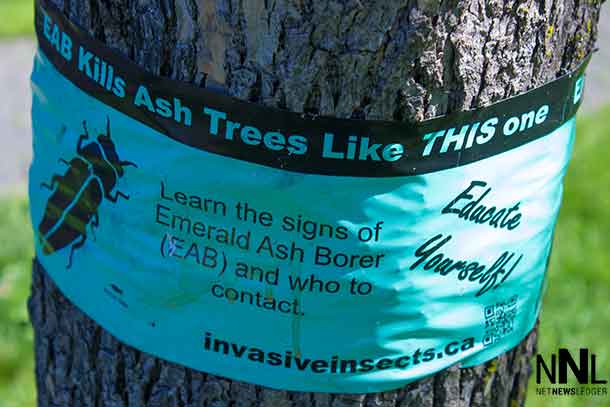
THUNDER BAY – The City of Thunder Bay has announced that following an thorough examination, the Canadian Food Inspection Agency (CFIA) – the federal agency responsible for regulating and managing invasive species – confirmed that the invasive Emerald Ash Borer (EAB) has been detected in Thunder Bay.
EAB is an invasive beetle native to Asia that is responsible for devastating millions of ash trees across North America. Thunder Bay represents the most northern city in which the pest has been found to date.
“The City has been aware of the encroaching EAB infestation for several years and is an active participant in the Northwestern Ontario EAB Task Force, which has coordinated proactive planning, education, and detection efforts since 2011,” said Shelley Vescio, City Forester and Chair of the Northwestern Ontario EAB Task Force. “As part of this work, the City’s Parks & Open Spaces Section has developed a recommended response plan that will be presented to City Council on July 18.”
The EAB was initially discovered last week in trees within a small radius at the corner of 4th Avenue and Memorial Avenue. City staff are working with the Ministry of Natural Resources and Forestry and the CFIA to survey the area surrounding the epicentre, determine whether additional City trees have been infested, and assess those that require immediate action.
The City will also install additional EAB detection traps around the perimeter of the epicentre. Approximately 60 of the green prism traps were hung throughout City ash trees in early June, and they will be continually inspected to monitor the EAB’s spread.
“Since ash trees make up approximately 25% of the City’s street trees, we intend to explore as many options as possible to mitigate EAB’s impacts and slow its movement,” added Vescio.
“It will be important for the City to preserve and replace as many trees as possible because of the numerous, often unseen benefits they provide. The single most important thing people can do is to not move firewood, as this is one of the most common ways EAB travels to a new area.”
Public information sessions will be held on July 19 and 20 to educate residents about how to look for EAB and what to do if they discover EAB on trees on their property. For more information, visit: www.thunderbay.ca/eab or www.dontmovefirewood.ca

